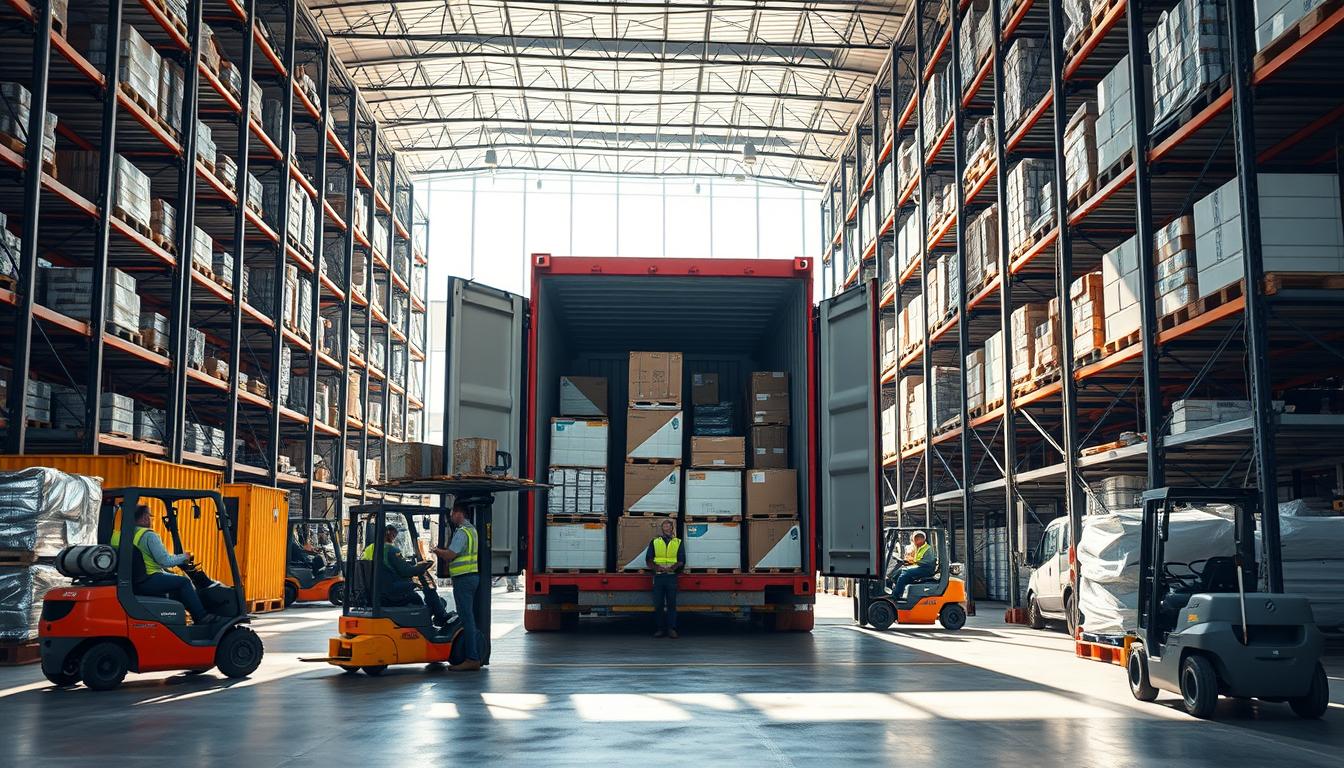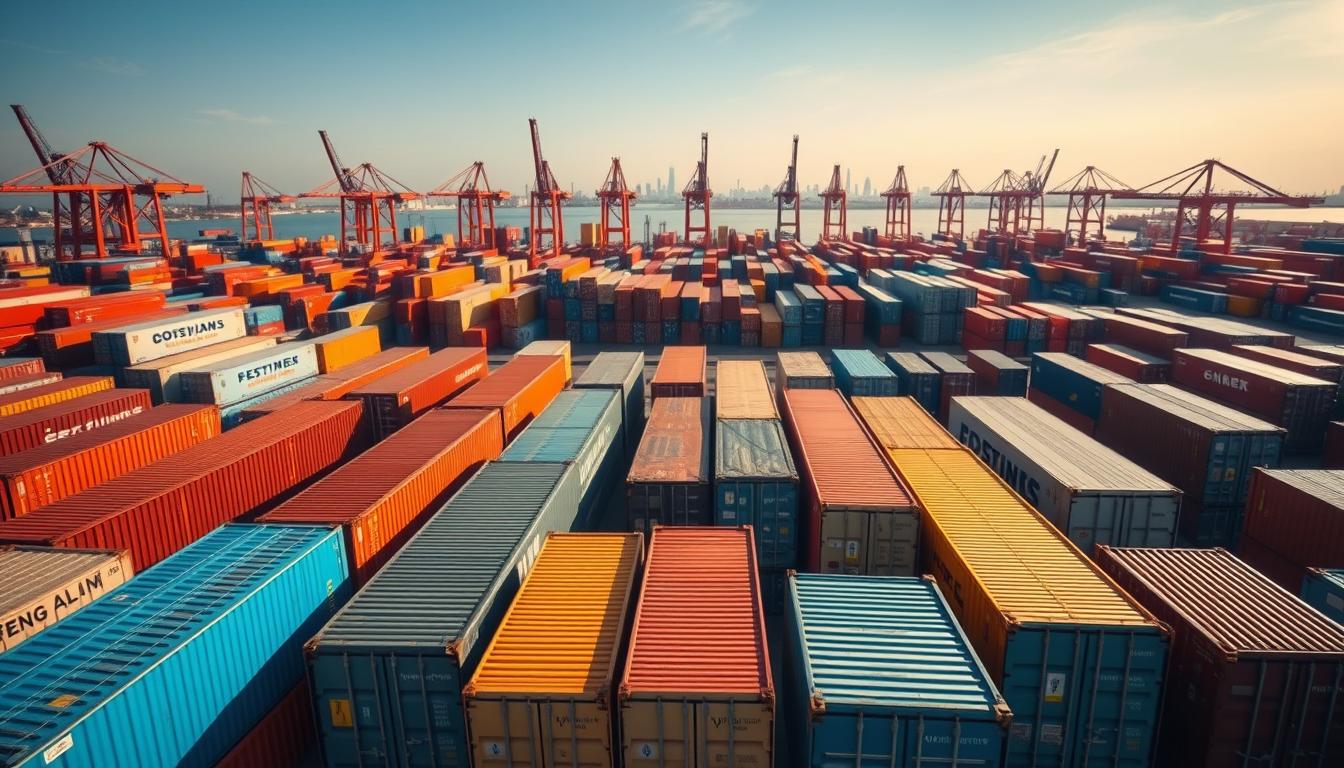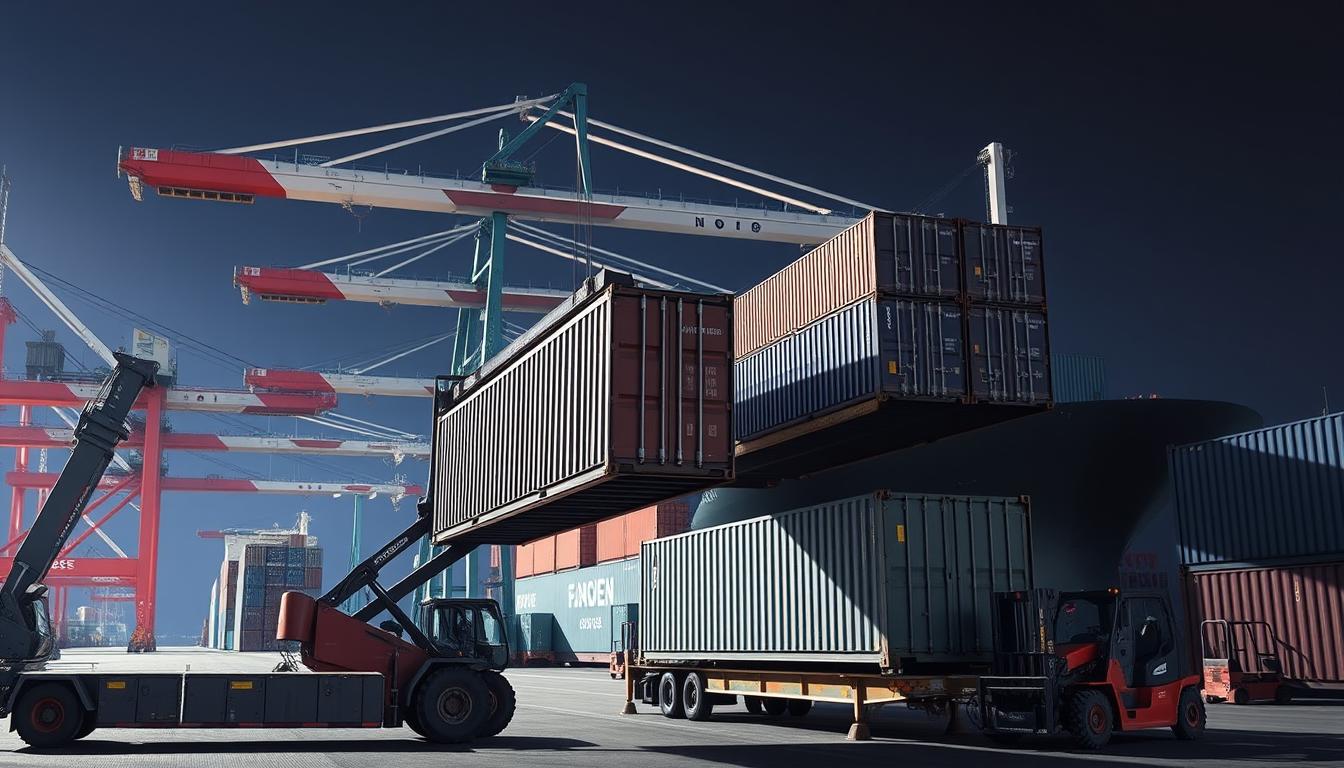 Efficiently loading containers is key for businesses and individuals shipping goods. The right loading techniques save space and keep your shipment safe during transport.
Efficiently loading containers is key for businesses and individuals shipping goods. The right loading techniques save space and keep your shipment safe during transport.
Learning how to manage shipping containers can cut down on costs and prevent damage to your cargo. Whether you work in logistics or own a small business, knowing how to load containers is crucial for moving goods well.
This guide will cover the essential parts of container loading. You’ll learn about choosing the right tools and packing strategies. This will help you improve your shipping process and keep your goods safe while they’re in transit.
Container loading needs careful planning and a good understanding of weight, security, and space use. By using the best practices, you can make your shipping operations more efficient.
Our expert tips will help you handle the challenges of cargo loading. This ensures your shipments arrive safely and in good condition. Get ready to learn the secrets of professional container loading that can save you time, money, and stress.
Understanding Container Types and Specifications

Shipping containers are key to global logistics. They come in various types to meet different needs. ISO containers have standard sizes that are widely used for international shipping. The most common sizes are 20-foot and 40-foot containers, used in both sea and land transport.
Each container type has its own purpose in global trade. Dry van containers are the most common, with solid walls and roofs to protect general cargo. Refrigerated containers, or reefers, keep perishable goods like food and medicines at the right temperature. Open-top and flat rack containers are for oversized or oddly shaped cargo that can’t fit standard containers.
Container specifications are more than just size. They include weight limits, strength, and special features. Standard ISO containers can carry between 21,600 to 28,200 kilograms, depending on their design. Special containers like tank containers are for liquids, and bulk containers for powdery or granular materials.
Knowing about container types helps shippers plan better. Choosing the right container protects cargo, uses space well, and follows shipping rules. Whether it’s electronics, machinery, or farm products, picking the right container is key for safe and affordable shipping.
Essential Equipment and Tools for Container Loading

Getting the right equipment is key for successful container loading. Logistics teams use special tools for safe and efficient transport. Forklifts are vital for moving heavy items quickly and accurately.
Packing materials are also crucial. Professionals use bubble wrap, foam, and strapping to protect items. These materials prevent damage and keep fragile items safe.
Other important tools include pallet jacks, ramps, and lifting devices. Warehouses buy high-quality tools for different cargo types. The right equipment helps use space well and keeps risks low.
Today, there’s advanced equipment like digital sensors and automated systems. These help teams place cargo better, manage weight, and boost efficiency. Quality tools are essential for safe and productive shipping.
Choosing the right equipment depends on cargo needs, container size, and transport conditions. It’s wise to keep tools in good shape and train staff well. This ensures the best performance and safety.
Pre-Loading Planning and Preparation
Getting ready for container loading is key. It starts with making a detailed cargo manifest. This document lists every item, its weight, size, and special needs. It helps avoid surprises during loading.
Creating a smart load plan is also important. It helps use space well and keeps cargo safe. Shippers plan where each item goes, thinking about weight and how fragile it is. This plan helps avoid damage during transport.
Checking the container is another big step. It’s about making sure it’s strong, clean, and in good shape. Shipping managers do these checks to spot any problems before they start loading.
Knowing your cargo well is smart. Different items need different ways of being loaded. Some need extra care, while others need to be placed just right to stay stable. Good planning can save a lot of trouble and money.
It’s wise to keep records of the loading process. New digital tools make making cargo manifests and load plans easier and more accurate. Using these tools can make shipping smoother and cut down on mistakes.
How to Load a Container Step by Step
The first step in “ How to load a container ” is planning and arranging cargo. Check the container for damage or debris and clean it well to ensure a safe space for your cargo.
Start by placing heavy items at the bottom and center. This keeps the container balanced. Use wooden pallets to create stable layers on top.
Fill gaps with materials like bubble wrap to keep items in place. This helps prevent damage during transport. It also makes the most of the container’s space.
Secure items with straps or nets to keep them in place. Make sure nothing sticks out of the container. This prevents shifting or falling during transport.
Finally, document your load with photos and an inventory list. This is important for insurance and tracking your cargo.
Weight Distribution and Balance Techniques
Proper container weight distribution is key for safe cargo transport. When loading, knowing how to manage the center of gravity is vital. This prevents dangerous shifts during transit.
Uneven weight can cause serious risks, like tipping or damage. Load balancing starts with planning where to place cargo. Heavier items go at the bottom and center for a stable base.
This keeps the container’s center of gravity stable. It lowers the risk of unexpected movement. Experts say to spread weight evenly on the container floor to avoid stressing the structure.
It’s important to calculate total weight and distribute items wisely. Lighter packages go on top of heavier ones, like a pyramid. This keeps cargo stable during transport. Tracking weight helps teams keep cargo safe and prevent damage.
Shippers use tools and techniques to check weight distribution. Digital scales and software help ensure safety standards are met. Balanced loading reduces risks and protects cargo during shipment.
Securing Cargo Inside the Container
Keeping your cargo safe on its journey is key. Experts use special methods to stop things from moving or getting damaged. They use different techniques to keep your goods stable and safe.
Dunnage is very important for protecting your cargo. It acts as a cushion between your items and the container walls. This helps reduce friction and absorbs shocks. Things like wood blocks, air bags, and special padding help spread out the weight and stop things from moving too much.
Professionals use strong straps, chains, and special tools to secure your cargo. They figure out the best spots to tie things down to stop them from moving. Steel containers need different ways to secure them compared to wooden or plastic ones.
Some main ways to secure cargo include: – Using vertical lashings – Setting up horizontal restraints – Using load blocks – Applying tension straps – Making sure weight is evenly distributed
Shipping pros say it’s important to check your securing gear before shipping. If straps are old or dunnage is damaged, it can put your cargo at risk. Keeping your gear in good shape and training your team well is crucial for protecting your valuable items.
Maximizing Space Utilization and Efficiency
Container space optimization is like solving a puzzle. It turns loading into a strategic game. Shippers pack cargo like they’re playing Tetris, where every inch counts.
Efficient packing is more than just fitting items. It’s about creating a safe space for goods during transport. This requires careful planning and attention to detail.
The first step in optimizing space is to know your cargo. Rectangular boxes stack well, but odd shapes need creative solutions. Think of your container as a three-dimensional puzzle. Use stackable containers and modular systems to increase space.
Cargo tetris involves planning and knowing your space. Use lightweight, rigid packing materials for structure without extra weight. Consider custom organizers or adjustable shelving for more vertical space. Soft items can fill gaps between rigid ones, using every inch.
Experts suggest making a detailed plan before loading. Measure items, sketch possible arrangements, and think about weight distribution. This approach turns packing challenges into efficient solutions.
Safety Protocols and Best Practices
Container loading safety starts with getting ready and knowing what to do. Workers need to wear personal protective equipment (PPE) to stay safe. This includes hard hats, steel-toed boots, reflective vests, and gloves to avoid injuries.
Before loading starts, it’s important to check for hazards. Look for danger spots, check equipment for damage, and make sure everyone can communicate well. Training is key to learning safe ways to work and spotting safety risks.
Using the right lifting methods is crucial for safety. Workers should use tools like hand trucks, forklifts, and straps to avoid straining themselves. Keeping areas clear, clean, and well-lit also helps prevent accidents.
Being ready for emergencies is also vital. Workers should know where first aid kits, fire extinguishers, and exits are. Safety drills and training keep everyone aware and safe, making container loading smoother.
Following these safety steps helps companies keep their workers safe. Sticking to PPE rules and preventing hazards is essential for safe container loading.
Common Loading Mistakes to Avoid
Container loading errors can lead to big risks for shipping. Many companies face costly mistakes that harm cargo safety and efficiency. It’s key to know these common mistakes to avoid damage and loss.
One big challenge is overloading risks. Too much weight can damage the container, make transport hard, and cause legal issues. It’s important to spread the weight right to keep things stable and prevent cargo from moving.
Preventing cargo damage starts with planning and smart loading. Shippers who are new often make mistakes like uneven weight, not securing cargo well, and stacking wrong. These errors can cause cargo to move, break, and cost a lot of money.
Some common mistakes include: – Unbalanced weight – Not securing cargo enough – Too much weight in the container – Bad packaging of fragile items – Ignoring load stability
Experts say training and strict loading rules are key. By checking everything carefully, you can cut down on mistakes and lower transport risks.
Learning the right loading techniques is worth it. With careful planning, checking, and following rules, you can keep your shipments safe. This helps keep your logistics running smoothly.
Legal Requirements and Compliance
Understanding container loading regulations is key. Shipping experts must know the laws that guide international cargo. This knowledge helps avoid legal issues and ensures smooth customs clearance.
Shipping documents are vital for staying compliant. Each shipment needs specific papers like commercial invoices and certificates of origin. Customs checks these to ensure shipments are legal and accurate.
Customs compliance is complex. Shippers must declare cargo correctly, follow weight limits, and stick to trade rules. Not doing so can lead to fines, delays, or even cargo seizures.
Important legal steps include: • Accurate cargo classification • Proper weight distribution • Complete and precise shipping documents • Following international shipping rules • Knowing import/export laws of each country
Logistics teams spend a lot of time on these rules. Working with experienced shipping partners can help avoid legal problems.
Conclusion
Container loading best practices are key for businesses wanting to ship efficiently and safely. They help improve logistics and lower risks during transport. This guide offers detailed techniques to enhance your skills.
Learning to load containers well takes planning, the right tools, and smart cargo placement. Choosing the right container and using weight distribution techniques are essential. Each step ensures your goods arrive safely and at a good price.
Spending time on these practices pays off in the long run. Teams that focus on safety, space, and rules work better. This approach cuts down on damage, lowers costs, and boosts your reputation for reliable cargo handling.
Container loading is a skill that grows with practice and learning. Stay current with industry standards and keep honing your skills. Whether you work in logistics or own a business, mastering these strategies leads to better, safer shipping.




